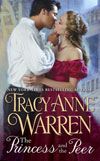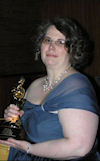TEA IN THE REGENCY
by
Tracy Anne Warren
Tea is synonymous with England——the nation’s favorite iconic beverage——yet a mere 200 years before the Regency, tea was wholly unknown to the British population. All that changed with the advent of the China trade in the 1600s. Competing successfully against ale and coffee, tea quickly gained preeminence, first among the aristocracy, who could afford its high price, then later with the middle-and lower class as declining costs moved it within their reach.
Even so, tea was far from inexpensive during the period, high quality leaves a luxury item that needed to be kept under lock and key. Often, household tea was stored inside a special china canister, or more likely, a finely inlaid wood caddy with two sections, one for green, the other for black.
Housemaids, eager to earn a few extra shillings, were known to dry their employer’s used tea leaves, then sell them to backdoor dealers, who would later profit from resale to unsuspecting customers. Thriving operations in smuggled tea also existed. Richard Twining of Twinings Tea estimated that at least half the tea drunk in England during the era came from contraband sources.
Guarding against theft by servants, the mistress of the house, or sometimes a trusted housekeeper, prepared the tea. Using a small brass or silver scoop, known as a tea ladle, she would measure the leaves into a teapot before once more locking away the precious commodity. Women often owned a special tea set (Jane Austen’s mother had a delicate Wedgwood breakfast set) which included a teapot, cups, saucers, creamer, sugar basin, and at times, a matching tray.
The elaborate ritual of afternoon tea, as we now know it, did not arise until the 1830s. Nonetheless, Regency folk frequently served food with their tea. Favorite accompaniments included pound and plum cakes, bath cakes, muffins, jams, and dainty slices of bread and butter.
The British during the Regency loved tea, a devotion that has only grown stronger with time.
Copyright © Tracy Anne Warren



